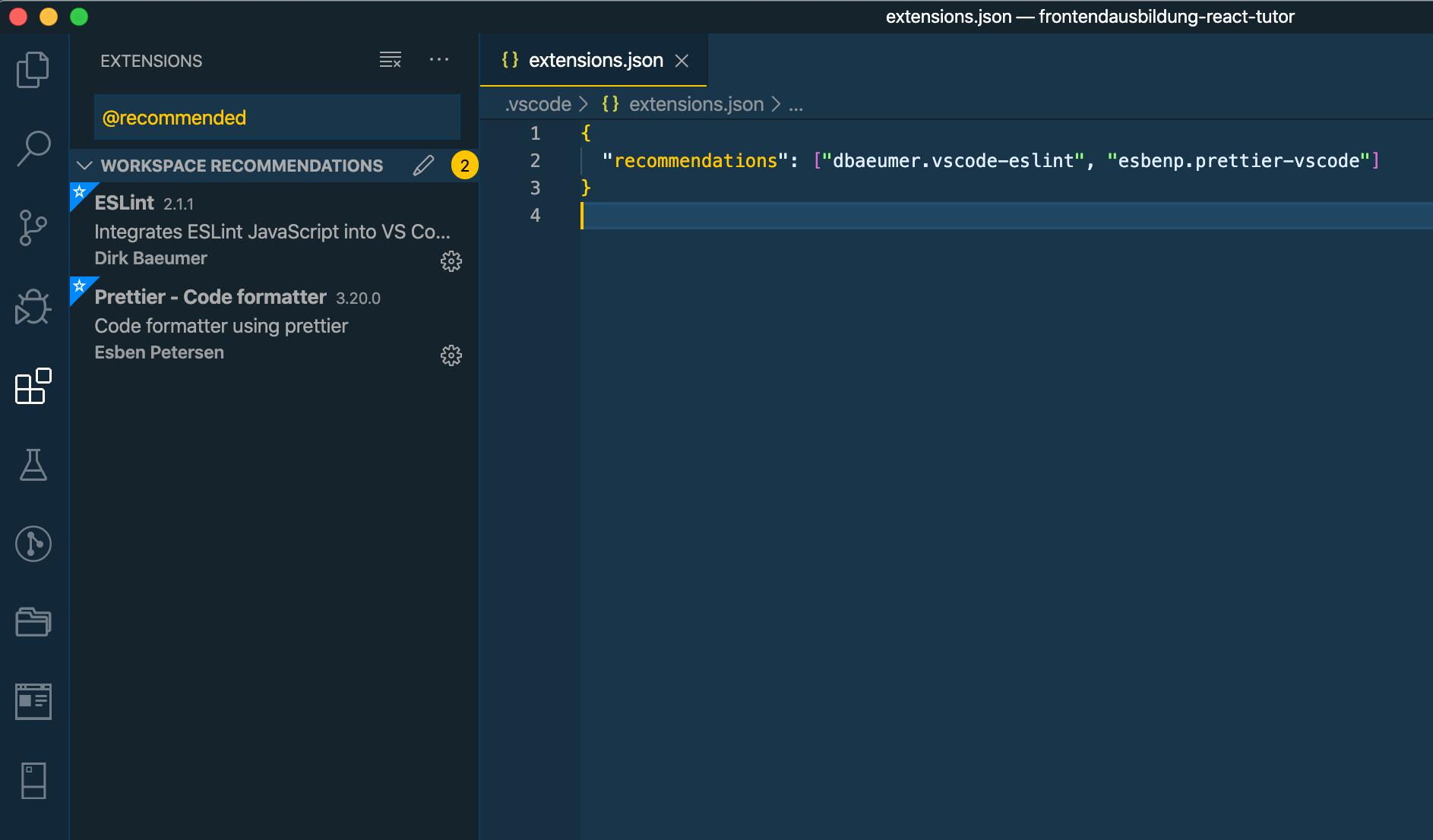Efficient Code Analyzing and Formatting (for React) with ESLint, Prettier and VSCode – 2020 Edition
Two years ago, I wrote an article on how to setup a development workflow utilizing ESLint for static code analysis and Prettier for beautifying code. It was in the context of Vue.js but 99% of the concepts and related technologies are independent of the actual frontend development framework. Meanwhile, I use React on a daily basis on my job project.
As you most likely know, things are steadily changing in "frontend world". That’s why I come up with a 2020 remake of my original article (which targeted Vue.js – but it doesn’t matter). However, I do not want to rehash the old article by duplicating chapters. Instead, I focus only on the technical details:
- related npm dependencies
- general ESLint / Prettier config
- React related config
- VSCode integration
If you are interested in the underlying concepts, please feel free to check out my former article:
- What is ESLint, what is Prettier, how they differ
- How to integrate ESLint with Prettier
- What are possible workflows (terminal, git hooks, IDE, etc.)
- IntelliJ integration
React Project Setup
The easiest thing to launch a running React project is to use create-react-app.
$ npx create-react-app react-project
Go to the package.json file, remove the eslint-config object.
"eslintConfig": {
"extends": "react-app"
}
Add the following devDependencies.
"devDependencies": {
"babel-eslint": "^10.0.3",
"eslint": "^6.8.0",
"eslint-config-babel": "^9.0.0",
"eslint-config-prettier": "^6.10.0",
"eslint-plugin-import": "^2.20.0",
"eslint-plugin-prettier": "^3.1.2",
"eslint-plugin-react": "^7.18.0",
"eslint-plugin-standard": "^4.0.1",
"prettier": "^1.19.1"
}
You can learn more about this dependencies by reading my old article.
TLTR; With this setup you can integrate ESLint with Prettier in a way that code formatting is turned off for ESLint (eslint-config-prettier) and runs Prettier as an ESLint rule (eslint-plugin-prettier. eslint-plugin-standard and eslint-plugin-react are two of the supported plugins.
Of course you have to install the dependencies:
$ npm i
The final step is to add a .eslintrc.json file to the root folder with the following content:
{
"extends": [
"prettier",
"prettier/standard",
"prettier/react",
"plugin:react/recommended"
],
"plugins": ["prettier"],
"rules": {
"prettier/prettier": "error"
},
"parser": "babel-eslint",
"env": {
"browser": true
},
"settings": {
"react": {
"pragma": "React",
"version": "detect"
}
}
}
Required Visual Studio Extensions
You need to install two VSCode extensions to get a pretty awesome developer UX. First, you have to install the Prettier plugin. In addition, you need the ESLint plugin as well. Just search in the extension section for the keywords "eslint" and "prettier" and make sure to install the correct ones, from Dirk Baeumer and Esben Petersen, respectively.
A nice feature of VSCode is to add recommended extensions to your project. It can be useful to get new developers productive fast. All you need to to is to add .vscode folder to the root of your project and add a extensions.json file with the following content:
{
"recommendations": [
"dbaeumer.vscode-eslint",
"esbenp.prettier-vscode"
]
}
For your colleagues it then looks like this.

Setup Format on Save
The final part of setting up VSCode is to provide the auto save configuration in the workspace settings. Fire up the command palette with ⇧⌘P and type "open workspace settings". Switch to the json editor. Put the following code inside the json file:
{
"editor.codeActionsOnSave": {
"source.fixAll.eslint": true
},
"editor.formatOnSave": true,
"[javascript]": {
"editor.formatOnSave": false
},
"[javascriptreact]": {
"editor.formatOnSave": false
}
}
The last two properties are necessary for me to turn of other formatting mechanism that have nothing to do with ESLint or Prettier.
By now I think it is a good idea to have these settings under version control. This workspace settings are located in .vscode/settings.json of your project. It can help to eliminate different VSCode setups among your colleagues. At least it saves time for recurring work.
At the latest after a restart of VSCode format on save should work as expected for JSX and javascript code as well as json and css files.
Demo Project
You can check out my demo project to see all this in action. Just perform the following steps:
- clone the project
- install the dependencies
$ npm install - Optional: Install the VSCode extensions for ESLint and Prettier. Go to the Extension section, enter @recommended into the Search Extensions in Marketplace search field, and install both extensions.
Go to javascript, json or css files, change them and press save. The file should be reformatted.
Conclusion
The setup became even easier than 2 years ago. However, many vectors change, so that it is always a bit complicated to find the interaction between all technologies. In addition, you can find outdated information on the net, which does not make life any easier. To fix the problem for February 2020, this article was created 😀.